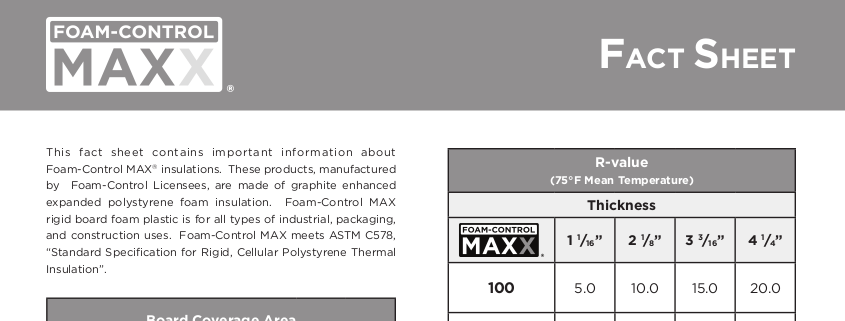Just How to Accomplish Optimal Foam Control for Improved Manufacturing Effectiveness
Just How to Accomplish Optimal Foam Control for Improved Manufacturing Effectiveness
Blog Article
A Comprehensive Overview to Carrying Out Foam Control Solutions in Your Operations
Reliable foam control is a critical aspect of functional efficiency that usually goes overlooked. Recognizing the ins and outs of foam generation can considerably impact both productivity and product quality. This guide outlines the numerous obstacles positioned by foam and the diverse services offered, providing a framework for choose and applying one of the most suitable strategies. By examining key factors such as application compatibility and workers training, organizations can enhance their foam management efforts. As we discover these parts, the capacity for transformative renovations in your procedures comes to be apparent. What steps will you take following?
Comprehending Foam Challenges
Foam obstacles are a considerable issue across numerous markets, impacting operational performance and item quality. The formation of extreme foam can impede procedures such as blending, transport, and storage, causing boosted downtime and waste. In fields like food and drink, pharmaceuticals, and petrochemicals, foam can hinder production lines, creating item inconsistencies and contamination threats.
In addition, foam can obstruct devices capability, bring about pricey repair services and upkeep. In wastewater treatment, foam can interfere with clarifier operations, resulting in lower treatment performance and regulative compliance concerns.
Understanding the underlying reasons of foam generation is essential for effective monitoring. Elements such as surfactants, temperature variations, and agitation levels can all add to foam production. Determining these components enables industries to apply targeted methods that decrease foam formation while keeping product stability.
Sorts Of Foam Control Solutions

Mechanical options involve the usage of gadgets such as foam skimmers or defoamers. Chemical remedies, on the other hand, include the application of defoaming agents-- compounds that disrupt the foam structure, leading to its collapse. Foam Control.
Last but not least, operational techniques concentrate on process modifications. This might entail customizing equipment criteria, such as temperature level and stress, or changing the flow rates of liquids to lessen foam generation. Carrying out great housekeeping techniques can additionally minimize foam development by lowering impurities that contribute to foam security.
Selecting the ideal foam control option includes examining the certain needs of the procedure, including the kind of process, the qualities of the materials included, and safety and security factors to consider.
Selecting the Right Products
Picking the appropriate foam control items needs a thorough understanding of the details application and its one-of-a-kind challenges. Aspects such as the type of foam, the environment in which it occurs, and the desired end result all play essential duties in product option. Foam Control. In markets like food processing, it is essential to pick food-grade defoamers that conform with security guidelines while properly taking care of foam.
Furthermore, take into consideration the thickness of the fluid where the foam problem exists. Some items are formulated for low-viscosity applications, while others are customized for thicker liquids. Compatibility with existing processes is an additional critical element; the picked foam control representatives should integrate seamlessly without interrupting total procedures.
Another critical variable is the method of application. Some items may need dilution, while others can be used directly. Evaluating the convenience of use and the called for dose can supply understandings into the item's performance and cost-effectiveness.
Application Strategies
Effective application strategies for foam control solutions need a systematic method that aligns product option with functional needs. The primary step involves an extensive analysis of the processes where foam takes informative post place, determining details locations that require intervention. By engaging cross-functional groups, consisting of design, high quality, and manufacturing guarantee, companies can collect insights that inform the selection of the most efficient foam control items.
Next, it is crucial to establish clear objectives for foam reduction, ensuring that these objectives are attainable and measurable. This may include specifying appropriate foam levels and the timelines for implementation. Educating workers on the residential or commercial properties and application techniques of selected foam control representatives is similarly vital, as proper use is vital for optimal results.
Additionally, integrating foam control services right into existing workflows calls for careful planning. Ultimately, a well-structured approach will improve functional efficiency while properly managing foam-related difficulties.
Surveillance and Assessing Efficiency
Surveillance and examining the efficiency of foam control options is vital for making certain that executed strategies produce the wanted results. This process involves methodical data collection and evaluation to analyze the performance of foam control agents and strategies. Key performance indications (KPIs) must be established before application, permitting a clear baseline versus which to measure progression.

Evaluating performance also calls for periodic testimonials of foam control treatments and agent effectiveness. This can be accomplished via sampling and testing, permitting drivers to establish if existing options are meeting operational needs. It is important to get feedback from group participants who engage with these systems daily, as their understandings can reveal functional nuances that measurable data might neglect.

Ultimately, an organized surveillance and examination framework assists recognize required changes, ensuring that foam control services stay efficient, cost-effective, and aligned with business goals.
Conclusion
In verdict, efficient foam control solutions are essential for maximizing functional efficiency and maintaining product high quality. A thorough a knockout post understanding of foam challenges, incorporated with the option of ideal items and execution approaches, go to this site promotes the effective monitoring of foam generation.
Applying great housekeeping techniques can also minimize foam formation by reducing contaminants that contribute to foam stability.
Picking the right foam control items calls for a detailed understanding of the details application and its distinct difficulties (Foam Control).Successful application strategies for foam control services require an organized technique that straightens item selection with operational needs.In verdict, efficient foam control remedies are important for maximizing operational efficiency and maintaining product high quality. An extensive understanding of foam obstacles, integrated with the option of proper products and implementation techniques, assists in the successful administration of foam generation
Report this page